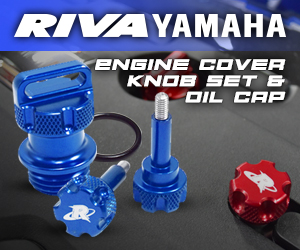The ride plate on your PWC is a vital piece of your machine and has several purposes. Your ride plate protects the pump, provides a surface on which the jet ski can ride, helps the impeller to suck in water, increases top speed, affects the ski’s riding characteristics and avoids porpoising; bouncing up and down while cruising, even through smoother waters.
Kspeed has engineered and manufactured ride plates for many years. They have created two different models for the 2012 – 2021 platform, the KS1 and the KS2 Offshore ride plates. They are both available for the 2012-up Ultra 300, the 2014 – 2021 Ultra 310 and the 2012 – 2021 Ultra LX.
The Watercraft Journal was able to get our hands on the Kspeed KS2 Offshore ride plate, so we just had to try it. For this purpose, we had a 2020 Kawasaki Ultra 310X. The first thing that you need to do is remove the old ride plate. To do that you need to remove the 6 6mm Allen bolts and the 4 Phillips head screws holding the paddle wheel in place (we recommend this first).
Make sure your Ultra is in reverse and disconnect the quick connect to your reverse bucket on the left side of your pump. After pulling the ride plate off, remove the reverse bucket held on by 2 bolts. Next, grab your new Kspeed KS2 Offshore ride plate, apply a little marine grease to the bolt holes and the outside of the bushings, then reattach your reverse bucket.
Apply some blue Locktite on the threads of the 2 bolts for the reverse bucket and wrench them back in. Make sure your paddle wheel is oriented the right way and slide your Kspeed KS2 Offshore ride plate into position. Using the 5 mm bolts provided by Kspeed, screw them in.
Notice that your new ride plate has 2 less holes than the stock. Then use your 4 Phillips head screws to attach your paddle wheel back into place. Reattach the quick connect to your reverse bucket. We advise to add marine grease to all fittings and bearings at this time.
As you can tell by the images, the KS2 Offshore ride plate has two very large deep scallops. These deep scallops radically increase the ramp which helps get the bow of the ski high up. In addition, there is an aggressive spine in the center, which is going to act as a natural skeg. It is going to give you a lot of bite and direction when it comes to handling, especially tracking in really big surf.
After installing the Kspeed KS2 Offshore ride plate, we took it out for a spin. We immediately noticed a difference in handling and trim control. We do think this may lower the top in speed down a little when having a tuned ECU on flat water, but we are confident it helps keep you connected with more control in rougher waters.




































